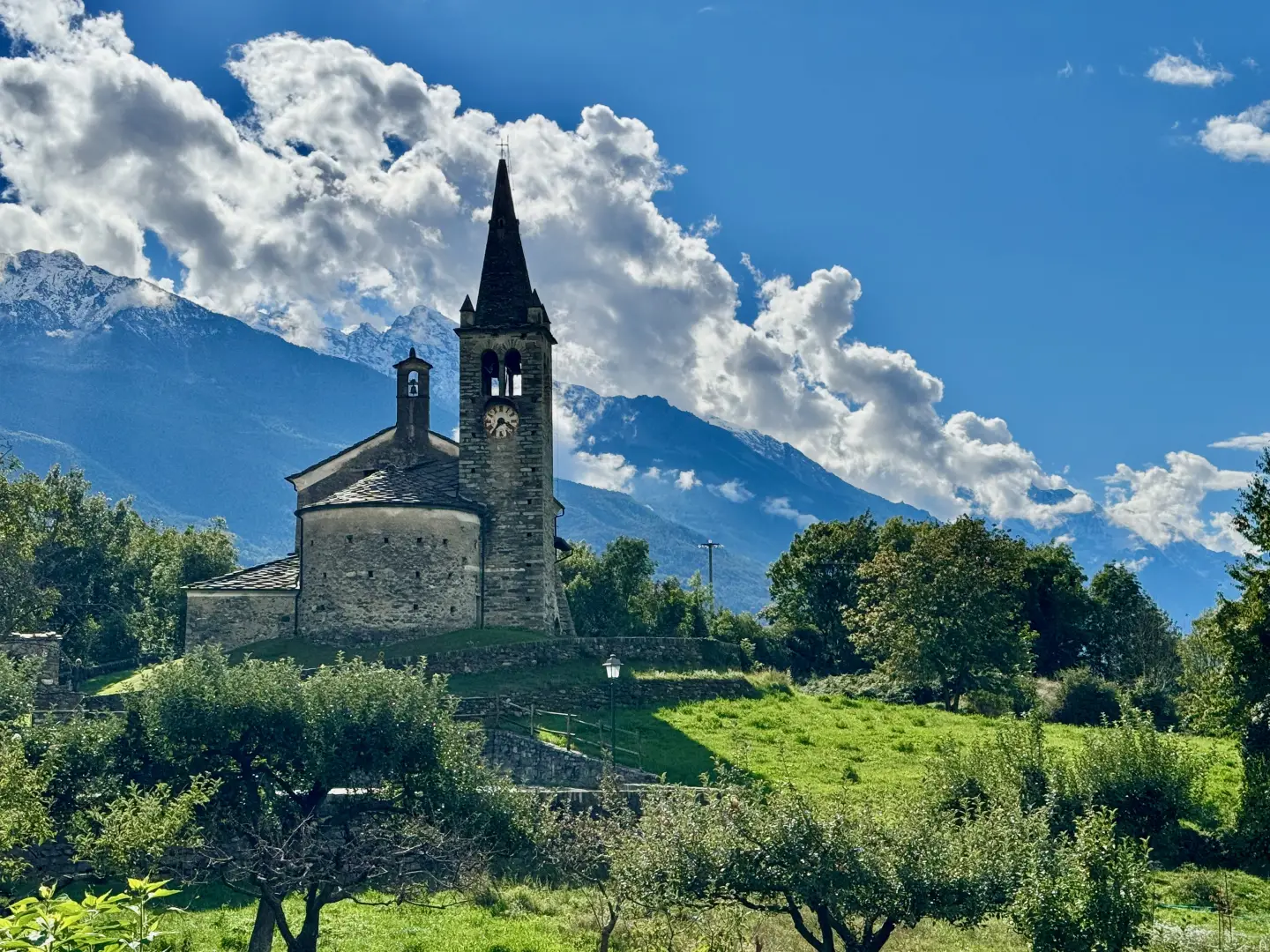Moron

Access
Moron is easily reached from the town of Saint-Vincent, which is about 4 km away and is served by numerous car parks and road links. From the centre, you can proceed by car along Via Marconi and Via Roma, as far as Piazza XXVIII Aprile, following the signs for the Roman Bridge and then taking the signposted path to Moron, which can also be walked from the village. The Châtillon/Saint-Vincent motorway exit on the facilitates access from the national network. Saint-Vincent has a railway station, with regular connections to Aosta and Chivasso, while the nearby Turin Caselle airport is the main interregional air hub.
Introduction
Situated on the hilly slopes of the municipality of Saint-Vincent, Moron is one of the most historically and culturally significant villages in the middle Aosta Valley. The locality develops around its seven hamlets, overlooking morainic heights and chestnut woods, at an altitude of over 800 metres. Moron is famous for the presence of the thousand-year-old church of San Maurizio, one of the oldest in the diocese of Aosta, which testifies to its role as a cultic centre and meeting point for neighbouring communities since the beginning of the 12th century. The landscape is characterised by agricultural terracing, dry stone walls and cliffs, with panoramic views of the central basin of Saint-Vincent, an environment that preserves a rich biodiversity and material evidence of Alpine human settlement.
.Description
The Moron area tells a story of autonomy and self-sufficiency: its villages were key players in the medieval road system that connected the Po valley to the transalpine areas via the Col de Joux. The ancient church, founded between the 11th and 12th centuries and enriched over the centuries by furnishings and works of art now preserved in the local Museum of Sacred Art, played a central role in spiritual rites, agricultural traditions and social organisation. Processions, religious festivals and ceremonies dedicated to Saint Maurice, the community's patron saint and a figure closely intertwined with the history of Aosta Valley and Savoy, have grown up around it. The village has been a burial place, cultural centre and meeting point for merchants, pilgrims and cattle bound for the markets of Aosta and France. Over time, Moron has hosted important religious figures, notaries, administrators and teachers who have contributed to the collective identity of the area.
The local economy is traditionally based on mountain agriculture, livestock breeding and handicrafts. Ancient grain mills and grape presses, located in the various nuclei, ensured the survival of the community for centuries, while heroic viticulture and cereal cultivation marked the landscape and punctuated daily life. In the 20th century, the progressive agricultural crisis and migration towards the valley floor profoundly changed the socio-economic fabric, but Moron still preserves material evidence and widespread memory through rural buildings, community ovens, fountains and wooden granaries. Local specialities include black bread, forest products and wood and stone craftsmanship, the memory of traditional knowledge, traces of which can still be seen in the architecture and ritual customs of the hamlets.
Moron is also distinguished by the liveliness of its popular and religious rituals, such as the St Maurice processions and the blessing of the vineyards, and by the legacy of craftsmen, scieur de long, millers and master carpenters who have made the village a hub of specialisation within the mountain economies. The natural environment, marked by historic chestnut groves and scenic clearings, offers visitors the chance to encounter squirrels, foxes and other species typical of alpine forests. The hiking trails that ascend from the Vallone di Cillian allow you to reach Moron in less than an hour's walk, offering, with a progression between the valley floor and the heights, views of the central basin of Saint-Vincent and the Cillian cliffs. The time indicated by the post at the start tends to be conservative and generally longer than the actual walking time; the walk is well signposted and facilitated by the presence of fountains and historical landmarks.
Information
General Information
- Altitude: approx. 836 m above sea level
- Name in dialect: Moron
- Inhabitants name: moronesi
- Patron Saint: St. Maurice
Points of Interest
Collections
- Villages of Saint-Vincent - map
- Villages of the middle Aosta Valley - map